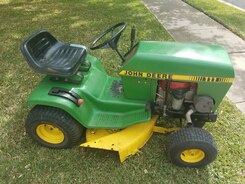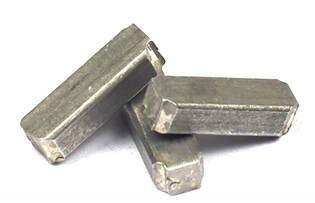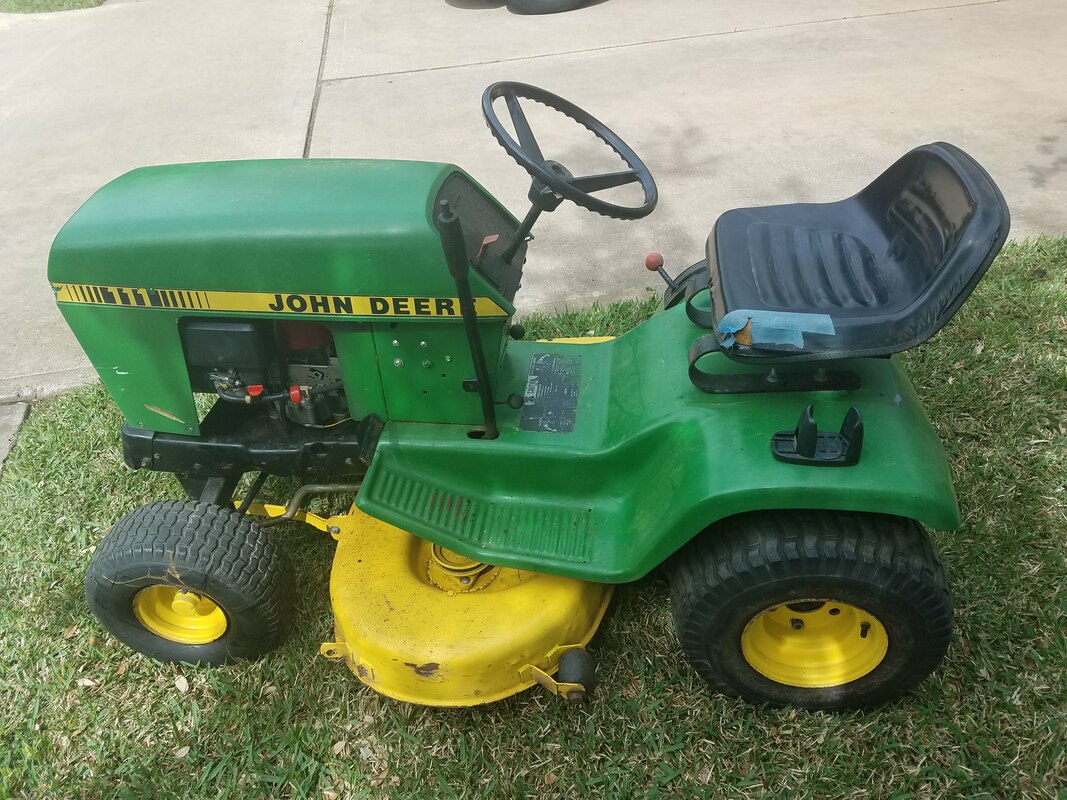 Some things were just obvious. The battery was missing. She was covered with dirt and chaff from sitting in an open pole barn on a farm near Taylor for a few years. Her tires were flat and her ignition switch was gone...and her model number indicated she was pushing 40 years old. But when I reached in and grabbed the output pulley, and tried to turn it by hand, her engine would move...so off to the shop she went and the search for parts got underway.
She had fuel in the cylinder. The spark plug was sparking. The compression was ok. What the heck?! All you need is Fuel, Fire (at the right time) and Compression and an engine will run. It must run. The starter spins the motor like a demon, but it won't start. It won't even pop once. It is definitely NOT running. What's happening?! Have you guessed yet? Yep. Ignition Timing. Spark really does need to happen at the right time. This engine has a three-phase alternator integrated into the flywheel and the top of the engine case. It is so simple it doesn't even have a voltage regulator. It keeps the battery charged...barely. But that's it. It has nothing to do with the ignition system.  In addition to the magnets that form the alternator, there is one more magnet mounted in the perimeter of the flywheel and it swings past a coil of wire that is connected to nothing except the spark plug. When the magnet comes by, it generates a pulse that sparks the plug and fires the charge in the cylinder. Simple. No points to set. No condenser to short out. Foolproof...except for one little detail. Recognize these shiny little aluminum rectangles? They are Woodruff Keys. The position of the flywheel on the crankshaft is critical because the ignition magneto must cause a spark at exactly the right time in the engine cycle. One of these little woodruff keys fits into a slot cut into the crankshaft and a matching slot cut into the hub of the flywheel, so that when the flywheel is mounted on the shaft, it is certain that the alignment is exactly correct...unless... Sometimes something happens...a backfire...and violent engine stop...a loose flywheel bolt...and the flywheel rotates on the shaft anyway, shearing the poor little soft aluminum key (but absorbing energy that might otherwise do more damage), and screwing up the ignition timing. The solution? Pull the flywheel, realign it with a new key, torque the mounting bolt to spec and try again. And she fired right up. Ran like a top. Two days later she was back on the job, roaring through grass like a 20 year old! Way to go Deere!
|
Categories
All
Archives
January 2024
|
|
© WrenchMonster 2018
|
WrenchMonster™ is a Division of DemonLite, LLC.
|


 RSS Feed
RSS Feed